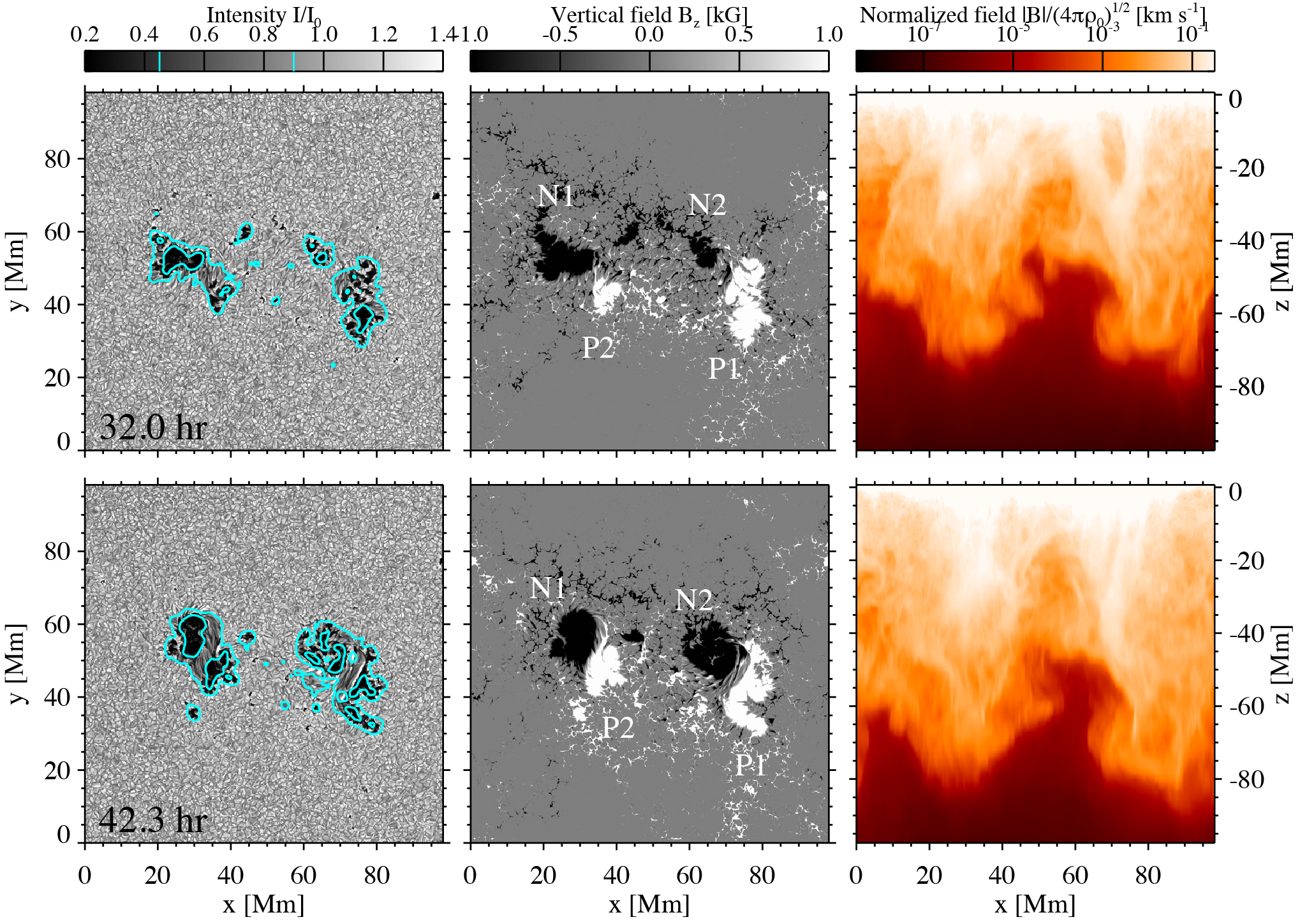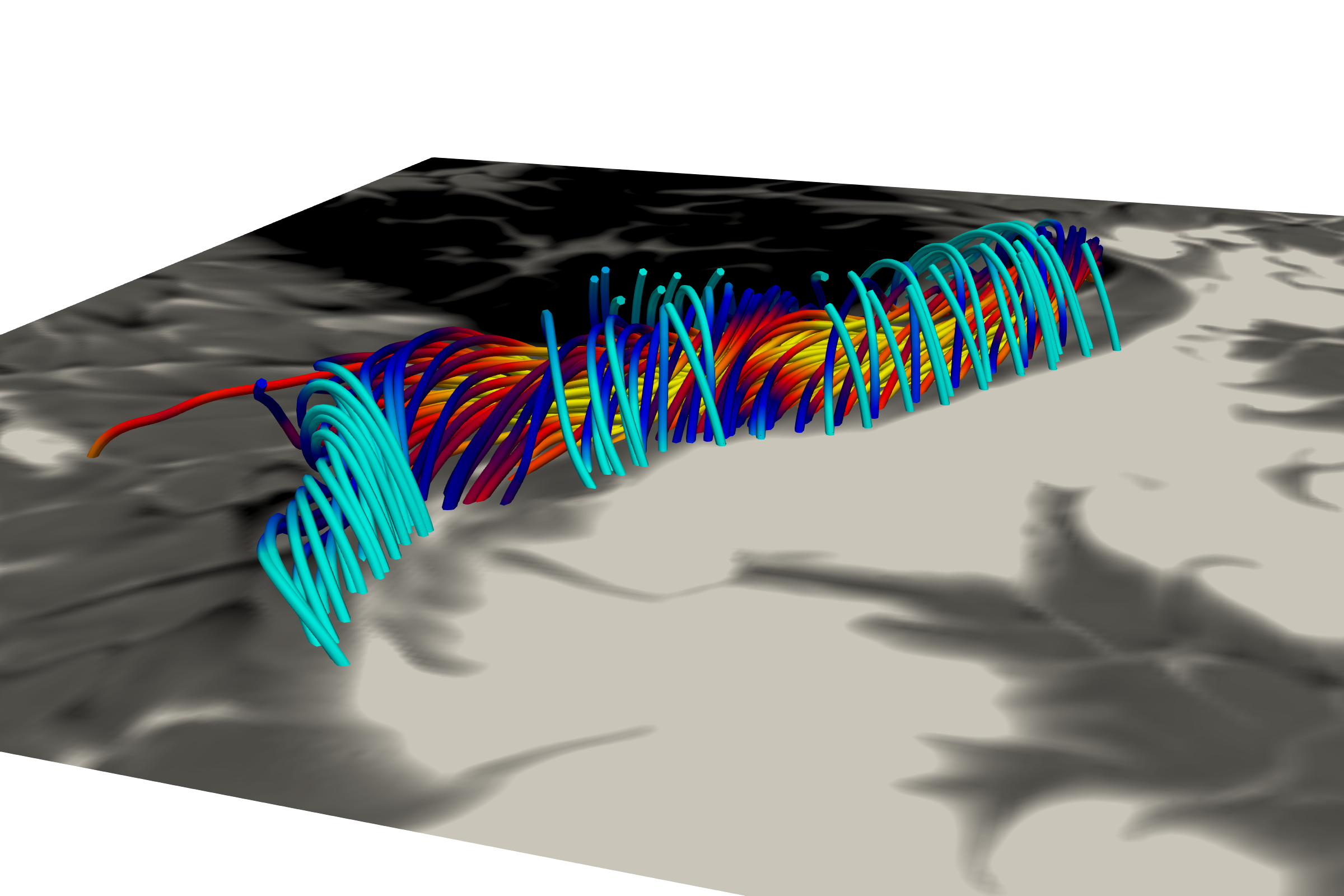Shin Toriumi (Japan Aerospace Exploration Agency)
Strong solar flares, which sometimes cause geomagnetic storms and aurorae, are known to emanate from complex-shaped sunspot regions. However, because the solar interior is inaccessible with optical observations, it has been unclear how subsurface magnetic flux emerges to the surface and produces such flare-productive sunspots. Although a multitude of numerical simulations that mimic the flux emergence from the interior have been conducted, most of them are highly idealized models in which the flux is arbitrarily endowed with complexity or forcibly injected into the computational domain. In this study, by utilizing state-of-the-art numerical code R2D2, we succeeded in the first-ever modeling of the convection-driven flux emergence and the resultant spontaneous generation of flare-productive sunspots.
One of the characteristics of R2D2 is that it can simultaneously solve a wide spectrum of thermal convection from the granular cells of 1000 km in size and 10 minutes in lifetime that reside in the solar surface to the 100,000 km-sized, one-month-life cells in the deep convection zone in a single computational domain. Here we study the process that a magnetic flux placed in the solar interior is elevated by this realistic thermal convection. As a result, large-scale convective upflows raise the flux to the surface at two sections and strongly-packed sunspots called the “delta-spots” are eventually generated (Figures 1 and 2). Delta-spots may produce great flares of X10 class or higher. The present simulation suggests that the generation of delta-spots, and therefore the resultant flare eruptions, are a stochastically determined process that depends on the interaction between magnetic flux and background turbulent convection within the solar interior.

Figure 1: Generation of flare-productive sunspots. From left to right, the emergent intensity, magnetic field strength (white and black indicate positive and negative polarities, respectively), and field strength on the vertical cross-section at the times of 32 hours and 42 hours. The positive and negative sunspots collide against each other and create “delta-spots”, in which umbrae of both polarities are surrounded by a common penumbra.

Figure 2: Strongly twisted magnetic field lines are created in the atmosphere above the delta-spots. This structure is called a magnetic flux rope, which is ejected into the interplanetary space once a flare eruption occurs.
S. Toriumi and H. Hotta, “Spontaneous Generation of δ-sunspots in Convective Magnetohydrodynamic Simulation of Magnetic Flux Emergence”, The Astrophysical Journal Letters, 886, L1, 2019
https://iopscience.iop.org/article/10.3847/2041-8213/ab55e7
Also refer to PSTEP Science Nugget No.19 for the R2D2 code and Science Nugget No.4 for the delta-sunspots.
